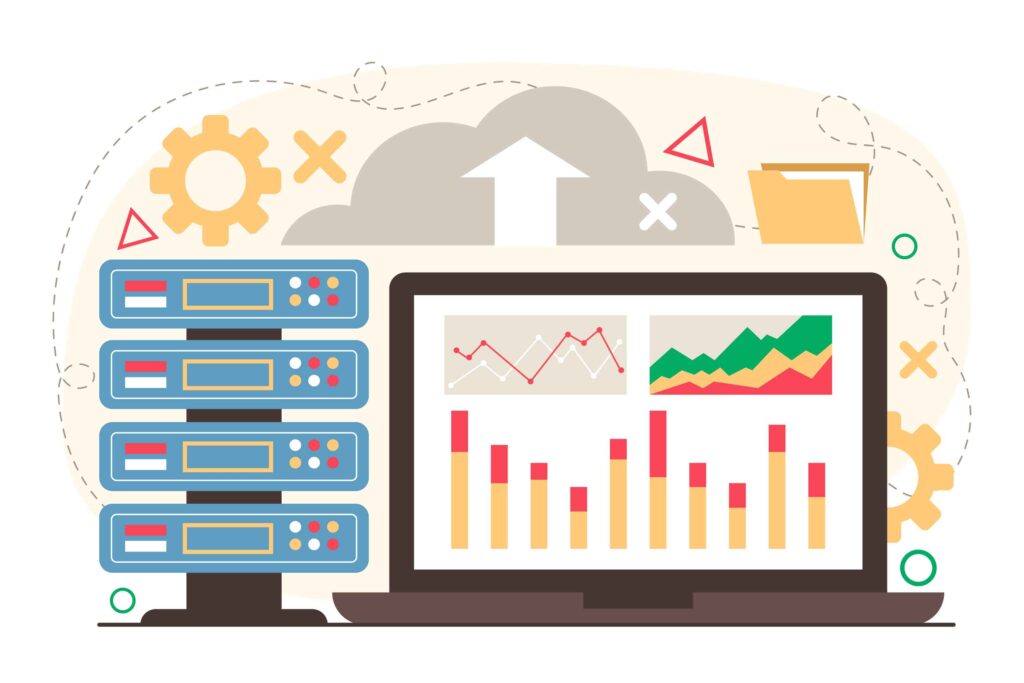Server-side tagging is the method utilized by marketers and website owners to manage and gather data about website visitors and their activity. You have possibly encountered many people discussing the ways server-side tagging has become a future for analytics implementation. But you should first better understand the potential advantages of this approach before investing your resources and time into it. In this article, we will delve into the benefits of server-side tagging in detail.
Benefits of Server-Side Tagging
Server-side tagging has several advantages, such as regaining control over the data as well as what is shared with third-party marketers, improving the collection of data so that your ad campaigns are better optimized, etc.
Reduced Page Load Time
One of the significant advantages of server-side tagging is improved website performance and reduced page load time. When a website loads, it must download and go through plenty of resources. Numerous trials have shown that adding JavaScript snippets to your site for data analysis or marketing objectives will dramatically slow it down and negatively impact the user’s experience. Your site will still load slowly even though the script has been loaded asynchronously, which is pretty much the norm these days.
Imagine having just a few unique scripts on your website rather than loading tons of them. These scripts would send information to the server-side Google Tag Manager container, which would then modify it following your settings and send it on to other platforms and tools that you are employing. Server-side tagging minimizes the total number of tags loaded by shifting the task of gathering data from the client’s browser to servers. This optimization leads to faster loading speeds and enhanced web performance, resulting in higher conversion rates and better user engagement.
Reduced Effect of Ad Blockers
Ad blockers are installed on the browsers of more than one-third of internet users worldwide. It is the main reason for interruptions in data gathering, which affects behavior tracking as well. As a result, you can be overlooking an important amount of online traffic data, which prevents you from making your decisions on complete and correct information.
Ad blockers are programmed to block requests to subdomains linked to tracking platforms, which can affect the accuracy of web analytics. However, by utilizing server-side tagging in your website’s subdomain, you can bypass detection by ad blockers. This allows you to forward tracking data directly from the server to your chosen analytics tool, resulting in more precise web analytics.
Reduced data Leakage and Privacy Protection
Server-side tagging grants you the power to exercise control and make decisions about the data transmitted to vendors. With server-side tagging, you gain more control over the information shared with third-party vendors. By implementing server-side tagging, you can selectively anonymize or conceal certain data elements, thereby preventing the disclosure of personally identifiable information to vendors. This approach serves to protect user privacy and ensures compliance with data protection regulations.
Moreover, server-side tagging provides you with the ability to filter and personalize the data transmitted to vendors according to your specific preferences. You have the flexibility to exclude sensitive data or include supplementary data points, allowing you to customize the information sent to the analytics tool or tracking platform to align with your requirements. Through server-side tagging, you gain greater control over the data shared with vendors, ensuring that only essential and pertinent information is exchanged while upholding user privacy and complying with data protection standards.
Read also: Data Filters In Google Analytics 4
Increased Cookie Shelf Life
The Apple Safari web browser has a set of privacy-protecting capabilities called Intelligent Tracking Prevention (ITP), however, it also applies to other iOS browsers. When a first-party cookie, which is limited to being accessed solely on your website, is stored in the visitor’s browser through JavaScript, it typically has a lifespan of 7 days (although in a few cases, it may expire within 24 hours). This expiration rule applies even if the JavaScript code is totally custom, developed in-house, and unrelated to any third-party vendors. The cookie’s duration of 7 days remains unless the visitor continues to revisit your site, leading to the cookie being updated and its expiration extended accordingly.
One way to overcome this restriction is by saving the cookie on the server side. This means that instead of storing the cookie directly in the visitor’s browser, it is stored on the server that is accessed through your domain. By doing this, you have the flexibility to set the expiration date of the cookie to any duration you choose, such as two years.

Drawbacks of Server-side Tagging
Server-side tagging, while offering certain advantages, also has some drawbacks. Here are a few potential drawbacks of server-side tagging.
Paid Solution
While the Google Tag Manager server-side container itself is free, there are costs associated with hosting it on the Google Cloud Platform (GCP). When setting up and testing the server-side container in a development or testing environment, you typically won’t incur any expenses. However, if you intend to use it on a live website with significant traffic, you’ll need to allocate resources on GCP, which may come with associated costs.
To clarify, the expense is not directly related to a premium Google Tag Manager subscription but rather the need to host the server-side container infrastructure. This hosting cost is incurred because the server-side container relies on the Google Cloud Platform for its operation. Therefore, when deploying the GTM server-side container in a production environment, you should consider the potential expenses involved in hosting it on GCP.
In a production configuration of the GTM server-side container, it is advisable to have a minimum of three servers running on the Google Cloud Platform. Every server is the App Engine instance in the Flexible environment, equipped with 1 vCPU, 10 Gigabyte disk space, and 0.5 Gigabyte memory. The cost per server is around $40 per month (USD). Therefore, to ensure redundancy and minimize the risk of loss of data during the server outage, you should budget at least $120 per month (USD) for hosting the GTM server-side container.
It’s important to note that the actual cost may vary depending on the amount of data you track and process. As the volume of data increases, the hosting expenses are likely to increase accordingly. Alternatively, you have the option to manually set up and use other servers for hosting the GTM server-side container.
Not Suitable for Everyone
Implementing server-side tagging in the GTM requires a higher level of technical expertise or the involvement of experienced analytics developers. GTM itself already involves various technical aspects, but server-side tagging takes it to a deeper level.
As a result, many businesses may hesitate to adopt server-side tagging in the near future. This hesitation could be due to the complexity involved and the challenge of accessing the necessary technical skills. Additionally, some businesses may be deterred by the potential increase in costs associated with server-side tagging without fully understanding or perceiving the potential benefits it can offer.
Conclusion!
Server-side tagging offers significant benefits in terms of data accuracy, but its implementation requires a higher level of technical expertise compared to typical client-side tracking. Additionally, adopting server-side tagging will involve extra financial costs for your business.
Therefore, it is crucial to carefully consider the advantages and disadvantages before delving further into the server-side setup.
However, for very small businesses or those in the early stages, server-side tagging may not be necessary. As your business grows and becomes more reliant on data-driven insights, integrating server-side tagging into the tech stack becomes increasingly important to extract maximum value from your data.
Read Our Recent Published Guides:
- Google Ads Conversion Tracking Vs All Tracking
- Understanding Event Parameter in Google Analytics 4
- Google Ads Conversion Tracking Vs All Tracking

